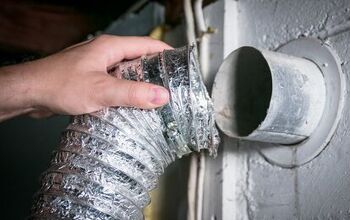Can Tree Roots Penetrate A PVC Pipe? (Find Out Now!)

PVC pipes are an excellent choice whether you’re planning any kind of home DIY project or you’re a professional contractor looking to do a job well done within a budget. PVC is remarkably sturdy, yet it’s far cheaper than many alternatives, such as galvanized steel or copper.
Plus, you only need a hacksaw to cut through the pipe. However, like all materials, PVC is prone to damage from Mother Nature. For example, PVC pipe’s lifespan can be cut in half if it’s constantly exposed to the sun.
Tree roots can penetrate right through a PVC pipe if they are leaking, or if the pipes joints aren’t put on securely. To prevent tree roots from getting into your pipes, protect them from weather by using elastomeric pipe joints and wrap your pipes before installation. If you take care of your PVC pipes, they can last up to 70 years.
Do You Need a Faucet, Fixture, or Pipe Repair or Replacement?
Get free, zero-commitment quotes from pro contractors near you.

How to Protect PVC Pipes from Root Damage
Like anything else in life, root damage to your PVC pipes can be easily prevented with just a bit of extra attention. Here are a couple of tips to help you out if you plan on putting pipes underground any time in the future.
What’s the Weather in Your Area?
There’s not a material on planet Earth that is ultimately tougher than Mother Nature. If you live somewhere where the temperatures will remain at or below freezing for large parts of the year, and you have water running through the pipes, this will weaken the PVC. Eventually, the PVC may crack or possibly burst. If even the smallest bit of water leaks from the crack, you can bet a root will find it.
To prevent a root from nestling itself in a crack – and to prevent this type of damage in general – you can insulate your PVC. Insulating pipes can also make them more energy efficient, which saves you money. If you need any tips and tricks on pipe insulation, we have you covered.
Elastomeric Pipe Joints
Another weak point for PVC pipes – and really all pipes – is in their joints. If the joints are not properly sealed, they’re prone to leaks. Even the most minor gap in a seal can attract a root, and we’re not exaggerating. Roots are freakishly smart and resourceful, and if you’re not careful, they soak up any free water and nutrients you (accidentally) provide.
However, to ensure your joints are leak-proof, just be sure to use elastomeric pipe joints. This stuff may sound fancy, but it’s basically just a rubber ring joint that you can buy for next to nothing at any local hardware store. In fact, many commercial building regulations will require these rubber seals because they’re cheap, easy to install and highly effective.
If you’re planning on rigging up your own home piping, this is perhaps the simplest step you can take to ensure roots stay away. We highly recommend getting some elastomeric pipe joints for your PVC.
Wrap Your Pipes Before Installation
Now, we’re not necessarily talking about insulation, which we mentioned above. You may not need insulation if you live in warmer areas, but you should still consider wrapping up your PVC if you’re putting it underground.
These non-insulation wraps are typically tape-like products that are relatively cheap and easy to work with. You simply wrap up your pipe from beginning to end, and just like that, it’s sealed up and protected on the outside from intrusion while holding in water from the inside.
This is another extremely simple yet highly effective measure that you can use against roots. Plus, most of these wraps are also shock-resistant, so any electrical waves that accidentally make their way to your PVC will be absorbed by the wrap.
Repairing a Leaky PVC Pipe
If you’ve already noticed a leaky pipe and you want to prevent a root from getting in there, you can repair the pipe fairly easily. There are several methods to do this, only some of which involve replacing the pipe. Naturally, we also have PVC repair covered for you.
Related Questions
So Will Roots Go Right Through PVC Pipe?
It’s not likely. PVC pipe is really tough and rigid stuff, and the chances of a tree root breaking right through are very slim. However, if the pipe creates a lot of condensation, roots will find it and then potentially wrap themselves around the pipe.Over time, this can create a pretty significant amount of pressure on the pipe. And, if you live in an area, we discussed earlier, where temperatures are low and water freezes in the pipes, your pipes will become weaker.A weak pipe, plus the pressure of a tree root wrapped around it, is a bad combination. So, before this ever happens to your pipe and causes it to snap, just go ahead and wrap it up.
Can roots really find water that easily?
Yes. Absolutely, yes. You do not want to test a root’s ability to find water and nutrients, especially if you live in a more arid climate. If you live in a dry part of the world, the trees and plants will be particularly adept at seeking out water. Even if it’s just a single drop of water leaking from a PVC pipe every couple of hours, you can bet that a root will find it.
Do You Need a Faucet, Fixture, or Pipe Repair or Replacement?
Get free, zero-commitment quotes from pro contractors near you.

Final Thoughts
Tree roots are surprisingly resilient, and you certainly don’t want them entering your pipes. While PVC pipes are known for their superior rigidity and toughness, this does not mean they’re impenetrable. Be it natural wear and tear on the pipe or a leaky joint, a tree root can find its way into your piping.
Luckily, there are several precautions you can take to prevent an accident. From insulation to tape-wrap to elastomeric pipe joints, you have several low-cost options to seal up your PVC pipes and keep the tree roots out.
Related Guide

We are a team of passionate homeowners, home improvement pros, and DIY enthusiasts who enjoy sharing home improvement, housekeeping, decorating, and more with other homeowners! Whether you're looking for a step-by-step guide on fixing an appliance or the cost of installing a fence, we've here to help.
More by Upgraded Home Team



























